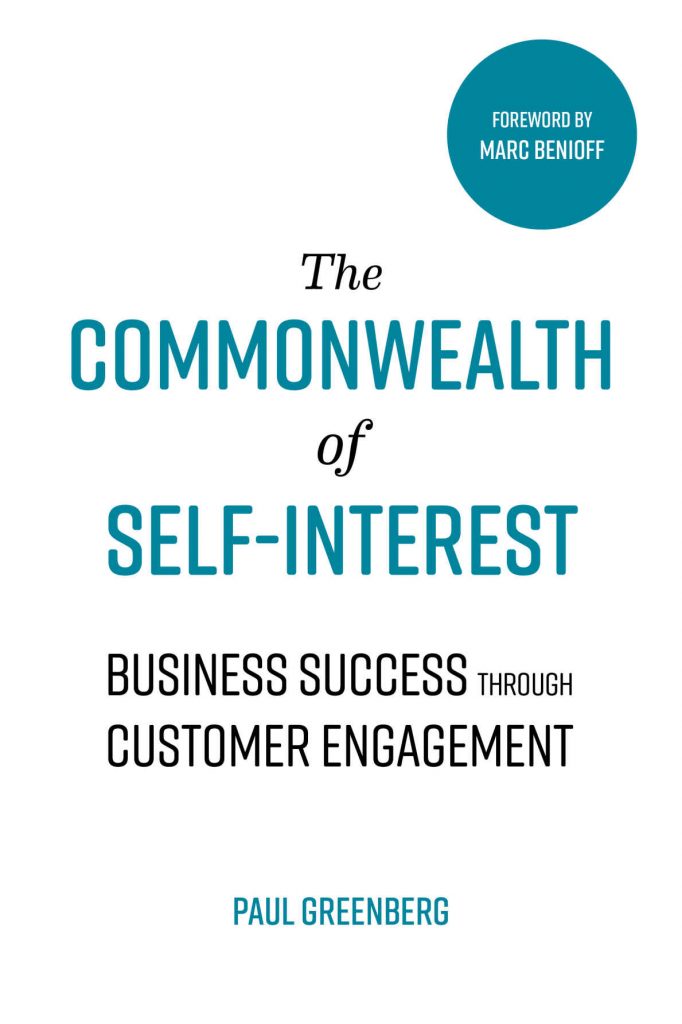
Have you ever met someone with whom you instantly connect? Someone so welcoming yet wise and humble but so special that you become instantly inseparable…that they make you better and maybe you help them become better too? That’s my very special relationship with Paul Greenberg.
Over the last few years, Paul’s set out to release his latest masterpiece, “The Commonwealth of Self-Interest.” He invited some of his closest friends to contribute including Bruce Temkin, Ray Wang, Brent Leary and Esteban Kolsky.
Twenty-first century customers are demanding more than ever – they will communicate with a company in whatever channel they need to at the time they want to. They want their interactions with the company to be seamless, convenient and simple. They want to get whatever it is they want to do with your company done as fast as possible. AND they want more than just good products and services, products, services, the tools they need to control their interactions with your company and consumable experiences. All in all, if you can’t compete by engaging them in ways that make them want to come back to you, you lose.
My contribution appears in Chapter 8. I wanted to share it with you here. But, this is just one section. The rest of the book is incredibly helpful for anyone working in digital transformation, CRM, CX, customer engagement, customer support or business growth.
Chapter 8
Our guru in this chapter, Brian Solis, is perhaps the expert in the design of the user/customer experience and the “look and feel” of engagement programs. Brian Solis is someone I know as a thought leader at an exalted level—a true game changer.
He is one of the most listened-to voices of our era when it comes to engaging customers and designing experience. He is a master of this science because he understands its art. He is the author of several books, most recently, his bestsellers Lifescale: How to Live a More Creative, Productive and Happy Life and X: The Experience When Business Meets Design, a seminal work on business and the value of creative design. But, best and most of all, he is a dear, dear friend. He has a lot to tell you on the subject of program design and customer behavior. I’ll leave this in his hands.
Take it away, my great friend.
THE FUTURE OF CUSTOMER ENGAGEMENT STARTS WITH AN UPGRADE IN HUMAN PERSPECTIVE
While CRM, historically, has always had the foundation for engagement—its three-pillar approach with sales, marketing, and customer service—all things customer-facing, while still appropriate, are not sufficient to compete in a digital economy. Customers are changing faster than most CRM systems can evolve. More so, how executives see and perceive customers and how they invest in customer experience (CX) efforts are also not keeping up with the times. Though CRM’s three-pillar approach is a necessary foundation of any core engagement program, connected customers are learning to expect more personalized and real-time engagement that mimics their favorite apps and mobile services. Customer experience and the perspective necessary to see how customers are changing need an upgrade from the front-line to the back office all the way to the C- suite. And that starts with the one thing often missing from CX strategy… empathy.
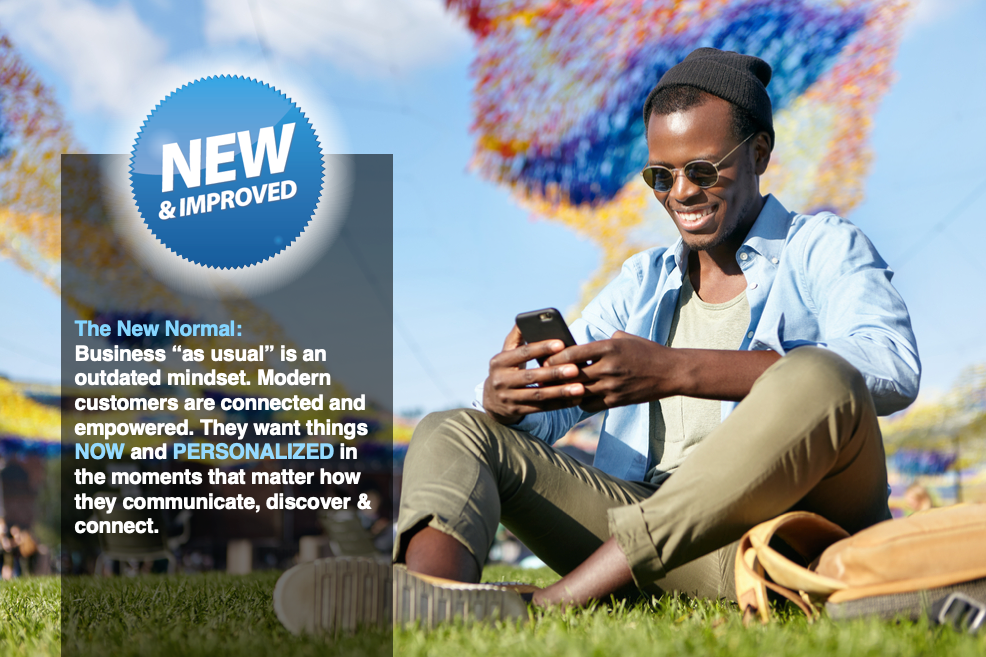
Connected customers see and experience the world differently than many executives assume or presume. Executives simply do not live digital lifestyles similar to their increasingly sophisticated, always-on customers. Instead, they are immersed day-in and day-out in managing businesses toward delivering shareholder and stakeholder value. Of course, driving for business objectives is critical. The challenge is that, without exploring new investments in innovation and digital transformation, organizations are doubling down and over- tapping existing resources. But there’s only so much momentum and treasure left for every business before facing the need to change or augment efforts in the pursuit of new sources of wealth.
Empathy is a human antenna that helps executives hone in on what people really do, feel, want, and value to inspire meaningful innovation and digital transformation. An awakening of this kind is crucial to see where initiatives are misdirected, completely missing, or currently failing.
But what is empathy and how does it relate to designing the customer’s experience to engage them in ways where they feel something worth experiencing again and again?
Empathy is the ability to understand and share the feelings of another. Often, when CX strategies are formulated, they do so without consideration of how customers actually feel and what they think in existing touchpoints. Furthermore, they do not appraise the experiences desirable customers have with their favorite startups, online and mobile services, and real-world experiences of companies outside of their industry. Customer experience, for all intents and purposes, largely seeks to improve the customer journey “as it is” versus exploring innovative options of “what’s possible” based on what people prefer, expect, and adore.
PEOPLE HAVE EXPERIENCES WHETHER YOU DESIGN FOR THEM OR NOT
It’s been said that customers do not want products, they want experiences. Connected consumers are saying they want more than transactional engagements, clever gimmicks, or outright marketing. And customers are expressing their discontent by taking action.89 percent of customers say they have switched brands because of poor customer experiences. But for those companies that invest in experiences, customers are more than ready to stand by you. In fact, a staggering 86 percent of customers have said that they are willing to pay up to 25 percent more for a superior experience.
Let me ask you this. What is the experience you want people to have and share? Does the answer align with your brand promise? Does either align with the experiences people are sharing about you right now? In my research, I’ve found that more often than not, businesses are indeed investing in improving customer experiences. But they are not explicitly designing intentional experiences, in each moment of truth, and then driving the level of change and investments necessary to deliver them consistently throughout the customer journey and lifecycle. Instead, they are looking at ways to improve experiences that people have at transactional levels.
- Let’s expedite the time for someone to talk to a representative.
- Let’s retrain representatives to be more helpful.
- Let’s get a fully loaded app to serve DIY customers.
- Let’s make our web site responsive for mobile users.
- Let’s improve our return policies.
- Let’s invest in the latest media in creative ways to reach people
where their attention is focused. - Let’s find out what’s happening with AI, chatbots, and messaging
apps to engage people their way!
While these are important steps forward, they aren’t examples of true experience design. They are acts to improve slivers of experiences. This is still important. But, fixing what’s broken and/or removing friction in the customer journey are just the beginning. That’s iteration in customer experience, where customers do the same thing but better. This is also a time for innovation where you can introduce new things that create new value. Experience design is an opportunity to both iterate and innovate to set the foundation, to write the book, for what people should think, feel, and do, as well as how these human elements assemble the desired brand essence and experience.
Customers don’t see departments or transactions independently. Each engagement, each moment, individually and then collectively, forms the universal experience people feel and remember. When you look at each moment of truth, every department, whether it’s sales, web, channel, social, email, even customer support, contributes to or takes away from the experience you set out to deliver. Yet knowing this, each function operates independently and often competitively, creating a disjointed customer experience thus. This takes away from the brand experience and, over time, opens the door for customers to find alternatives that better align with their expectations, behaviors, and values.
CUSTOMER EXPERIENCE TAKES DIGITAL TRANSFORMATION
Leading analysts around the world agree that customer experience is the new battleground for businesses to differentiate and compete. Delightful, frictionless, and memorable customer experiences contribute to the bottom line of any business, yield increased customer satisfaction, loyalty, advocacy, and customer lifetime value. One of the biggest CX trends in industries around the world is digital transformation, which represents the investment in upgraded technologies, processes, and infrastructure to compete for a new generation of connected customers. This sets the stage for a more agile organization, one that is more capable of introducing and supporting new services and processes, better and at scale. But technology and agility are just the beginning.
In my research over the years, I find that, while businesses are ready to take on the challenge of digital transformation and customer experience, it is done through a lens of legacy rather than with an updated vision of what’s possible. Yet, what your customers experience is shaped as a whole, and thus requires thoughtful design to engage customers, in whole and in each part, to first deliver against expectations and eventually exceed them.
MEET YOUR NEW CUSTOMER SEGMENT—GENERATION C (CONNECTED)
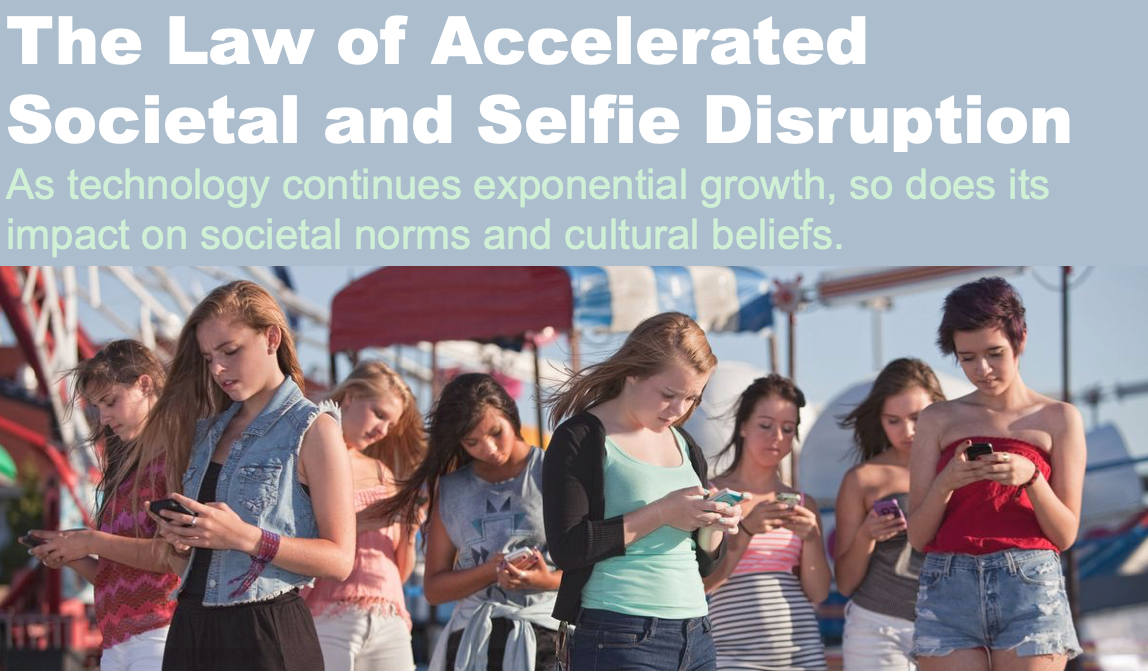
Even though you think you’re already customer-centric, you may not be. I believe you believe you are. But customer-centricity is measured in action and inaction. Many companies, I’ve learned, are customer- centric in principle but not in practice. The truth is that, most of the time decisions are made in favor of shareholder or stakeholder value over what’s in the best interest of customers.
Several years ago, I published a series of reports and books introducing what I called the “Dynamic Customer Journey,” which was meant to outline in detail how connected customers traveled through the customer journey. It redrew the traditional funnel and highlighted the emergence of new touch points ranging from social to mobile to video to peer-to-peer reviews. More so, it introduced “Generation-C,” a growing influential customer segment that shared similar behaviors, interests, and aspirations unlike previously documented demographics. The “C” represents connectedness, and everything about how, where, and why they make decisions is highly evolved and evolving. This is a critical distinction in consumerism in that those who live active digital lifestyles shared similarities in customer journeys across all age groups. Rather than just looking at millennials vs. boomers or Gen Xers vs. centennials, Generation C is inclusive of multiple demographics and warrants a digital (and mobile) first approach to CX and the design of products, services, and all experiences.
By studying traditional customers and Generation C, CX strategists can uncover new insights and inspiration to build relevance and market share in this and the next economy.
SHIFTING PERSPECTIVE TO RETHINK PRODUCT AND SERVICE DESIGN
One thing I find consistently in my research is that customer experience is often led by technology initiatives as part of overall modernization efforts. But customer experience is in the eye of the beholder. It is not anything you can solve for from a technology-first roadmap. As strange as this sounds, customers are human and it is their experiences that should be front-and-center of any CX strategy. Believe it or not, customers aren’t at the center of customer-centric investments.
Executive decision-makers are not representatives of or champions for evolving customer segments. They don’t think or behave like modern customers. They operate through a complex organizational culture and report to shareholders and stakeholders, which makes it difficult to see customers (as people) clearly and genuinely. Yet, executives often think they are their customer and make decisions accordingly. This sets the stage for what I refer to as an experience divide where executive mindsets and investments and customer preferences and aspirations are increasingly growing apart.
I want to get you thinking about this with a little test.
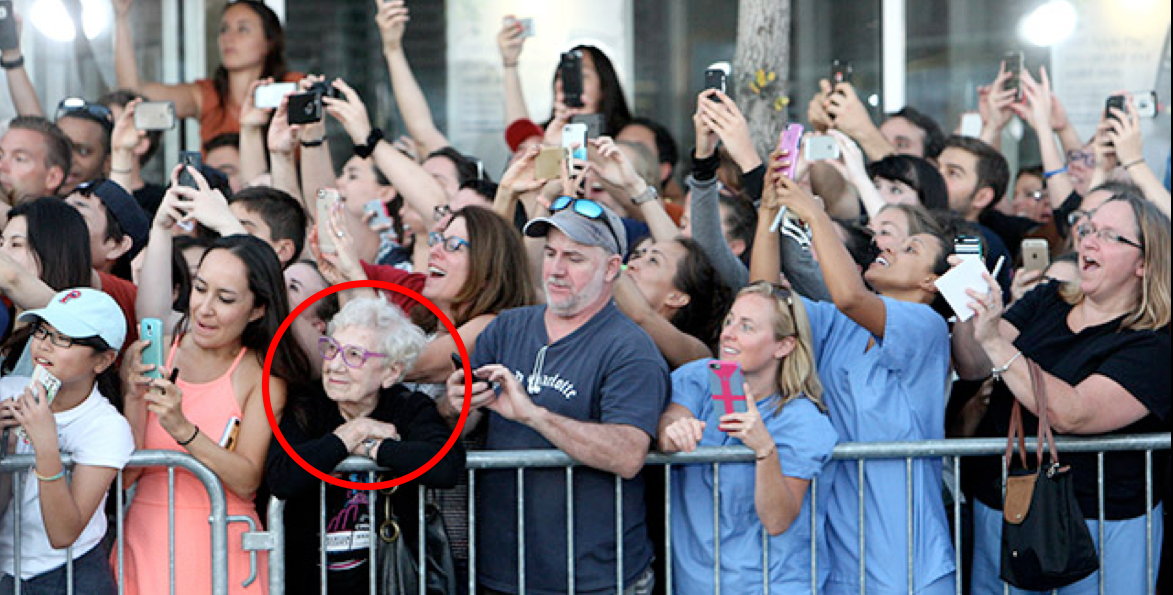
Imagine a crowd along a railing at a parade or attending a concert or some other attention-worthy event. Now picture the crowd modestly close up and only that crowd. Among the crowd is a mix of middle- aged people, boomers, and younger people. What do you see when you think of the different age groups convening on a momentous event? Depending on who you ask, you get different answers. But, what do you see?
Most of the time, we see scores of people with their phones up, capturing the moment rather than being in the moment.
How do you react to that observation?
Are you one of the people with their phones raised enthusiastically? Are you living digital and physical moments hoping to share what you are witnessing with friends and followers on your favorite networks and apps?
Or, do you see those attempting to be in the moment but distracted by all of the phones around them?
These days there are always those with their phones and those without. Although, every day, those without phones are becoming a relic of the past.
When certain genres of people focus on those with phones, they tend not to appreciate their behavior but, instead, question it.
“In my day, I would be in the moment. Why do people bother showing up if they can’t look up!?”
For everyone else, it’s simply second nature. It’s how they live life. It’s how they experience (and share) everything.
When you stop and think about it, there’s an “us vs. them” reaction to the evolving differences between what was and what is normal. And, if you notice, any time someone starts a sentence with “in my day,” they should be automatically disqualified from designing engagement or experience solutions for emerging generations of connected customers.
Let’s take a step back to think about this.
Many customer journeys, systems, processes, and policies are designed for customers without smart phones. They’re simply “the customers we’ve known for a long time.” Any time you design new CX strategies, customer touch points, apps, or mobile services, or consider new technologies, this group is holding you back from the future of business. All they inspire is business-as-usual with some new tech bolted on to it.
All too often, this is the center of reference for many strategists today (and the board that governs all new investments). As such, it’s easy to see always-on consumers and the technology that they use as fringe, the latest in hot trends, or something that is different from you and the world you know so it must not be critical. This leads to a few different types of experience design approaches, including:
! Iterate on existing services to deliver the same old thing but maybe better.
! Capitalize on a tech trend to try to “be hip” and emphasize tech over value or usability.
! Repackage existing products and incentivize them with new gimmicks.
! Create physical and online experiences with the latest tech without understanding how to blend tech and experience in culturally relevant ways that captivate connected customers.
Either way, you may miss what’s really going on.
Some see people on their phones prioritizing tech over the moment. Others see that they are not only in the moment, but they’re able to straddle digital and physical worlds to share the moment with others in real time, thus making the moment bigger than just to those present. Everyone in this picture is in the moment. The question is, can you design experiences that cater to traditional customers and the evolving expectations of your connected customers?
Hint: you can, and you can’t.
But understanding what you know and don’t know is exactly how you win. The future of digital transformation and innovative customer experiences can only go so far as the products, services, processes, systems, operations, et al. are designed to support. This is why customer experience, design, innovation, and leadership must work in lock-step to fuse the connection between usefulness, user experience, value, and enchantment. Change gains momentum with a new mindset that sees customers, markets, and opportunities through a lens of possibility and invention, not legacy perspectives.
INNOVATION TAKES DESIGN FOR CONNECTED GENERATIONS
It is how customers, for all their differences and similarities, feel about your business and its ethos as tied to their objectives, values, and how they correlate to other great/negative experiences they have in other facets of their life. That means, in addition to building an agile infrastructure, organizations must also consider the relationship customers have with technology and how that changes their standards for service, engagement, and experience. More so, executives and technologists must also understand people, what they value, what they expect, what makes them happy, and why. Otherwise, new technology is, at best, novelty and, at worst, an inconvenience. The same plays out with products and services and also every touch point from the first mile to the last mile.
Let’s start with a direct but layered question, “What value does your business offer connected customers today versus the value you can deliver if you took a new look at the state of the world today?”
What your business means to shareholders and stakeholders may well, in fact, be different to Generation C. To them, a magazine is an iPad that doesn’t work. To you, analog-first decision-making is natural because that’s how you learned throughout your life. But Generation C, for example, use mobile devices as their first or only “PC” and live on services such as Uber, Lyft, Postmates, Airbnb, TaskRabbit, Filld, et al. Their standards for engagement, utility, and value are different than yours, and designing for what matters to them without genuine empathy is imprudent.
The standard for traditional customers might mean call centers, online chat, email service, PC-based and mobile-ready websites, having a physical location to conduct manual transactions, etc. On the other side of the equation, Generation C might manage money with different intents and goals. How they engage with information or transactions emulates the user interfaces and experiences of their favorite networking and messaging apps, such as Tinder, Instagram, Kik, Snapchat, and the like.
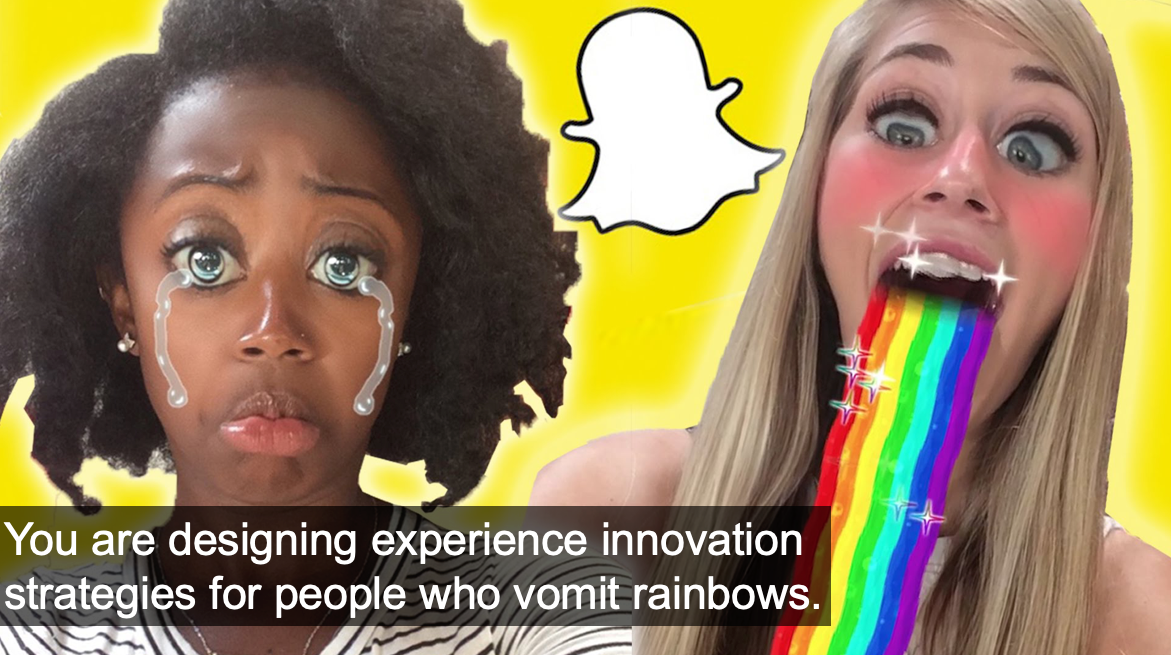
I know, you’re thinking, “What do those services have to do with my business?” At a cursory level, the answer is “not much.” But when it comes to user experience, the answer shifts to “everything.”
The design cues inherent in each of these apps cater to a connected mindset, making interaction frictionless if not invisible and hyper- transactional. And, these apps seamlessly bridge offline and online interaction.
Then there’s the emerging trend of “no UI is the next UI,” setting the state for voice commands, AI, and a new foray of engagement opportunities that further shift customer standards and expectations. The point is, these apps become your competitors and also sources of inspiration to innovate.
BE HUMAN. HUMANITY IS THE KILLER APP OF DIGITAL TRANSFORMATION
You can’t see the new customer if you’re in denial of their market impact and influence. This isn’t a trend. People aren’t going back to the way things were, which conveniently aligns with how executives see the world and the processes that support legacy standards for customer engagement.
In my research, I found that only 54 percent of companies undergoing digital transformation have completely mapped out the customer journey. Of that number, only 20 percent have mapped out the customer’s mobile journey.
There’s no way to get ahead of customer evolution if you have no idea what it is. It’s also impossible to deliver meaningful and shareable experiences if you have zero empathy for the digital customer.
If you have aspects of the three pillars of CRM that meet or exceed customer expectations but fail or under-deliver in others, the customer experience can never be 100 percent. This is because technology cannot feel or empathize with customers—not even with artificial intelligence. The problem is that companies do not take a human-centered perspective. CRM is still rooted in technology-first paradigms that by design do not deliver or foster authentic, emotional, and integrated experiences. To design human-centered customer experiences takes intention and a combination of informational and emotional architecture. This facilitates how customer engagement is cultivated through technology and empathy to deliver experiences that people feel and value.
This means that we need to rethink the very definition of CX. Technology-first approaches miss the human element. When you consider customer experience from the vantage point of what customers experience and what experiences they love and those that they can do without, by default it evokes empathy. Next-generation customer experiences cannot be defined by technology, processes, systems, and other operational components without first seeing the customer journey through a human lens. As such, we need an upgraded definition of CX…
Customer experience is the sum of all engagements a customer has with your company, in each moment of truth, in each touchpoint, throughout the customer journey and the customer lifecycle. It’s not any one thing that you do well; it’s everything.
While we’re at it, we need a new appreciation and understanding of what the word “experience” even means. It is not an NPS score. It is not CSAT or CLV. It is also not time-to-resolution. Experience is an emotion. Experience is something you feel, something you sense and interpret, and it’s measured by how you react. You either feel that an experience is delightful and worth remembering and sharing or it’s not, and it’s either forgettable or memorable and shareable for reasons that are not beneficial to the brand. For companies that care, the best experiences become memories, and memories become the foundation for customer loyalty and advocacy.
Innovation in CX is all the work you do to conform to expectations and aspirations of people as they evolve instead of making them conform to your legacy perspectives, assumptions, processes, and metrics of success.
To win in customer experience, to win the hearts and minds of Generation C and all customers alike, start by taking some steps toward the digital transformation of your perspective and beliefs.
- Accept you are not your customer.
- Establish a game plan that begins with the insights that matter to customers and the outcomes that matter to your business, otherwise nothing else matters.
- Study your physical, digital, and mobile customer journey and assess where there is friction, where you’re excelling, and where you’re absent.
- Study the customer journeys, user experiences, and value propositions of companies outside of your industry that are effectively engaging Generation C.
- Assess their preferences, expectations, behaviors, and values.
- Identify new ways to add value to the customer’s experience.
- Educate all stakeholders and shareholders on the state of the evolving market and do so in ways that the C-suite understands.
- Define an experiential standard for which all those working on CX and the technology to support it can work collaboratively and in alignment.
- Implement new metrics that track experience design against real-world customer experiences.
- Learn and improve.
Now that was just the right combination of art and science. Brian, thank you.
I think that Brian provided clarity about the design we should consider, and now we’re well underway when it comes to customer engagement. Agreed? If you do, then it’s time to start thinking about the biggest question of all—how do we build a culture to sustain all of… this (picture a wide sweep of the hand).

Brian Solis, Author, Speaker, Futurist
Brian Solis is principal analyst and futurist at Altimeter, the digital analyst group at Prophet, Brian is a world renowned keynote speakerand 8x best-selling author. In his new book, Lifescale: How to live a more creative, productive and happy life, Brian tackles the struggles of living in a world rife with constant digital distractions. His model for “Lifescaling” helps readers overcome the unforeseen consequences of living a digital life to break away from diversions, focus on what’s important, spark newfound creativity and unlock new possibilities. His previous book, X: The Experience When Business Meets Design, explores the future of brand and customer engagement through experience design.
Please, invite him to speak at your next event or bring him in to your organization to inspire colleagues, executives and boards of directors.
Follow Brian Solis!
Twitter: @briansolis
Facebook: TheBrianSolis
LinkedIn: BrianSolis
Instagram: BrianSolis
Pinterest: BrianSolis
Youtube: BrianSolisTV
Newsletter: Please Subscribe
Speaking Inquiries: Contact
____________________________
Follow Lifescale!
Main Newsletter: Please Subscribe
Coaches Newsletter: Please Subscribe
Twitter: @LifescaleU
Instagram: @LifescaleU
Facebook: Lifescale University
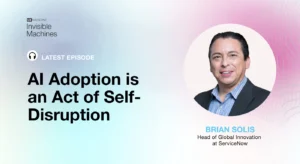
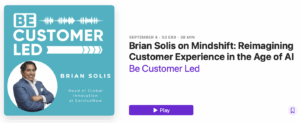
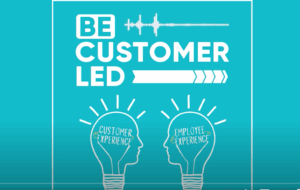


Leave a Reply